Dipping your toes into the Willamette River on a sunny day is the perfect way to beat the heat and embrace nature. But before taking that leap, have you ever wondered what lurks beneath the water’s surface?
The Willamette River winds its way through the heart of Oregon. But the big question remains: What’s in the Willamette River, and is it safe to swim in? Join us as we dive headfirst into the mysteries of the Willamette and whether it’s a paradise for swimmers or better suited for curious observers.
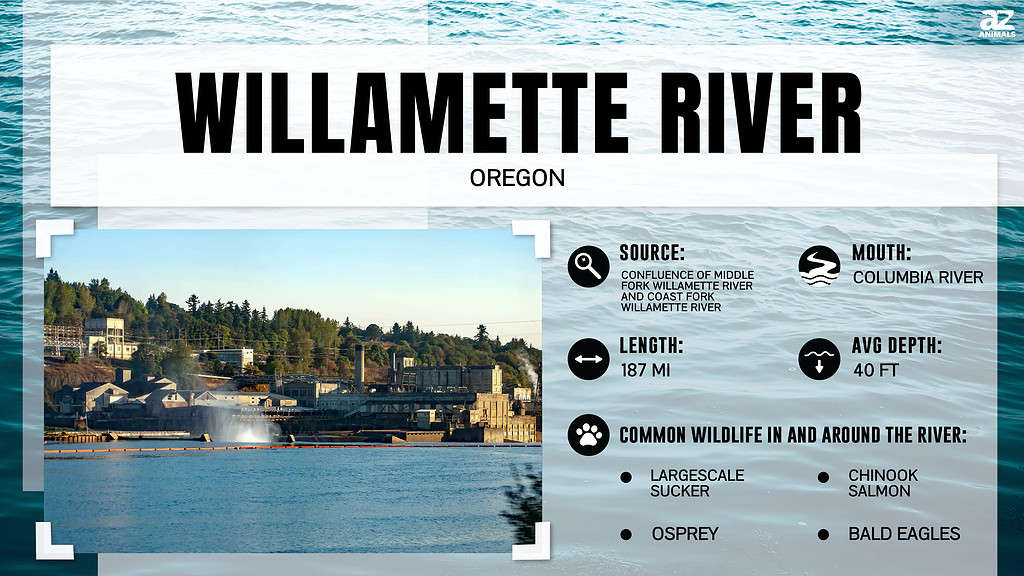
About the Willamette River
The Willamette River starts at the convergence of the Middle and Coast Forks, flowing from the Cascade Range mountains snaking its way for 187 miles passing Corvallis, Albany, Salem, and Oregon City, and emptying into the Columbia River near Portland. Its mainstem is the 13th largest river by volume in the USA and is a major tributary of the Columbia River. It accounts for 12% to 15% of the Columbia River’s flow.
The river flows northwards and passes through small and large cities, showing off spectacular wildlife viewing opportunities. It offers abundant outdoor recreation and the breathtaking beauty of Willamette Valley. The Willamette Valley, where Salem, the state capital, and 70% of Oregon’s population are located, is formed by the river and its tributaries. The state’s largest city, Portland, surrounds the Willamette River mouth at the Columbia River.
The Willamette Basin, covering more than 11,500 square miles, is the largest watershed in the state. It flows through the heart of downtown Portland and is a vital connection for fish and wildlife migrating to habitat and spawning streams. It sports 15 large and smaller dams built in Willamette’s drainage basin, lakes, and reservoirs. Along its flow, it drains more than 7 million acres of land.
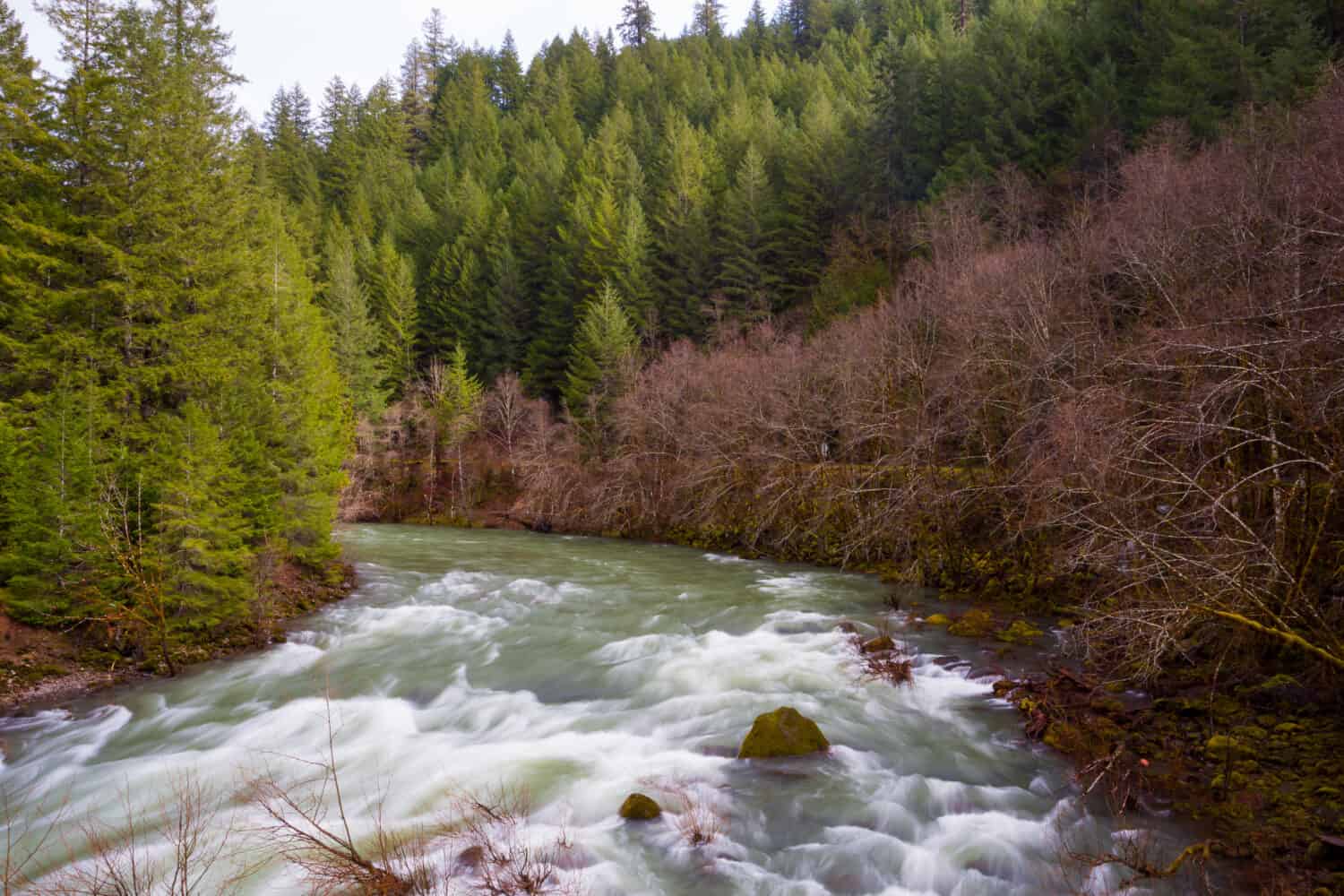
Be cautious when swimming at Willamette River – there may be fallen logs or branches in the water, and the currents can change.
©Joshua Rainey Photography/Shutterstock.com
Hazards at Willamette River
On the Willamette River and Willamette Basin’s journey through Oregon, there will naturally be many challenges and hazards along the route. Urban and agricultural development over the decades has taken its toll!
The following are some of the hazards at the Willamette River:
- Loss of floodplain – This flat land alongside the river is covered in water when the river floods and is fertile due to river sediment being deposited there. It is generally good for planting food.
- Various invasive plants and animals seriously threaten wild fauna and flora.
- Stormwater overflow into the river can increase bacterial contamination.
- Loss of riparian (bordering) habitat. Riparian plant life is important for holding the soil together, and its network of roots reduces erosion.
- Temperature, bacteria, mercury, pesticides, and other contaminants violate water quality.
- In some areas, increased blue-green algae during summer are harmful.
- Wood is a chief hazard! Logs, wads of roots, and other wood extending from the shoreline or bobbing in the current can interfere with or obstruct your craft on the water.
The Department of Environmental Quality (DEQ) of both the State of Oregon and the City of Portland has programs in place to protect rivers, lakes, streams, and groundwater quality to keep these waters safe and beneficial for uses such as drinking water, fish habitat, recreation, and irrigation. They regularly monitor bacterial levels in the river and post warnings when necessary.
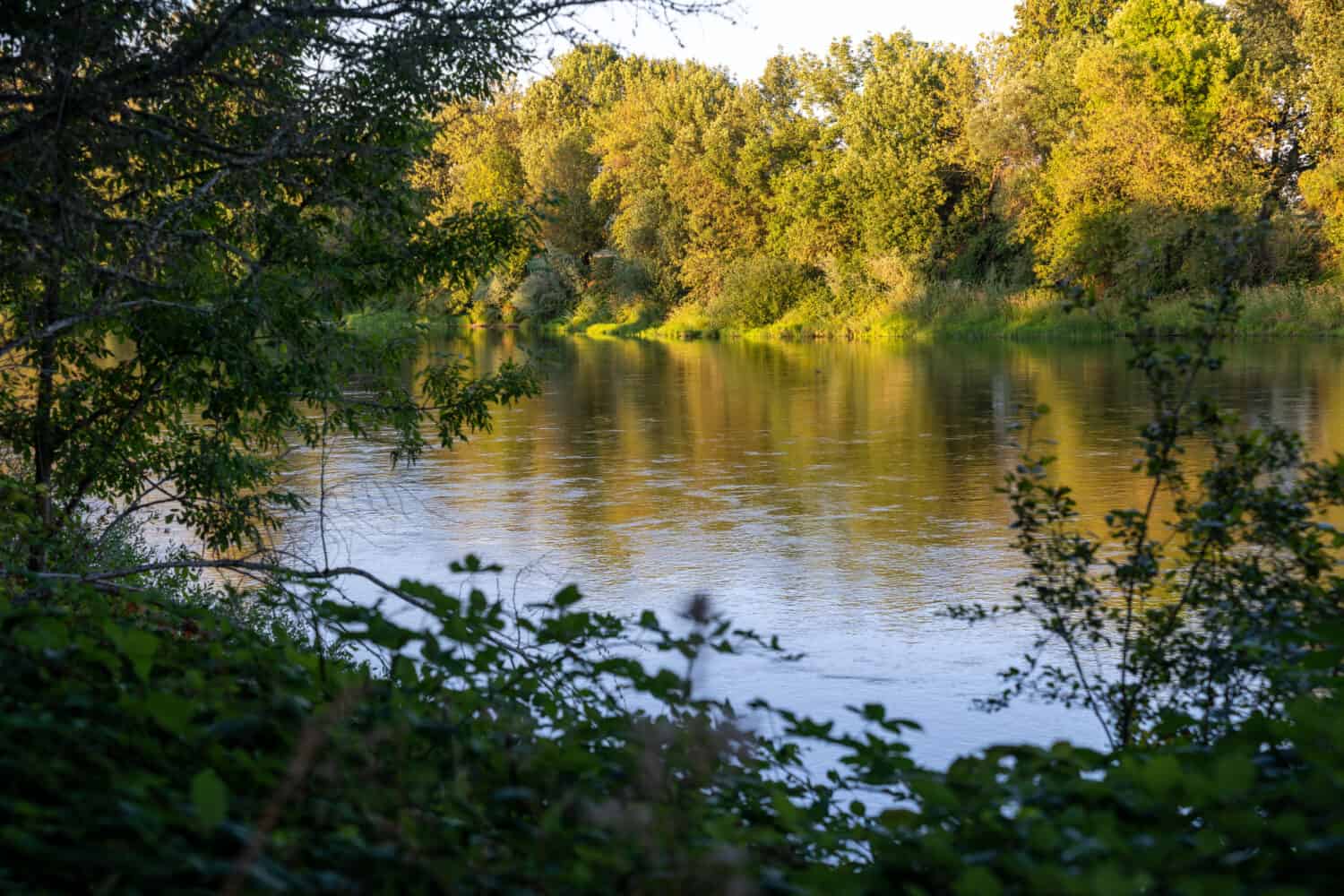
Visit the Willamette River from June to September and enjoy many water activities, such as kayaking and river rafting.
©melissamn/Shutterstock.com
When Is the Best Time to Visit the Willamette River?
The best time to visit the Willamette River would be from June to September, the warmest and driest time of the year. Ideal activities at this time of the year include hiking, biking, swimming, beach strolling, fishing, boating, kayaking, river rafting, camping, and many more.
The best time to avoid crowds at the Willamette River is the winter months, November through March, when it is slow, foggy, misty, and rainy.
It is almost always safe to swim in the Willamette River! Discretionary caution and safety need to be exercised, however.
The Willamette River is an active, living body of water that could be dangerous and must be approached cautiously. When swimming, know your limitations. You will need a certain level of strength and swimming ability. The water is not static—the water levels drop and rise, and the currents change. There’s often debris, fallen logs and branches, or boats and jet skis that one needs to be aware of.
The current can vary depending on tide and rainfall, challenging even strong swimmers. Beware of cold water and limit your time swimming. Don’t swim alone! Be visible and audible. In addition, wear a colorful swim cap and have a whistle. Swim close to the shore, and don’t swallow water. It’s also advisable to check the weather forecast for the area.
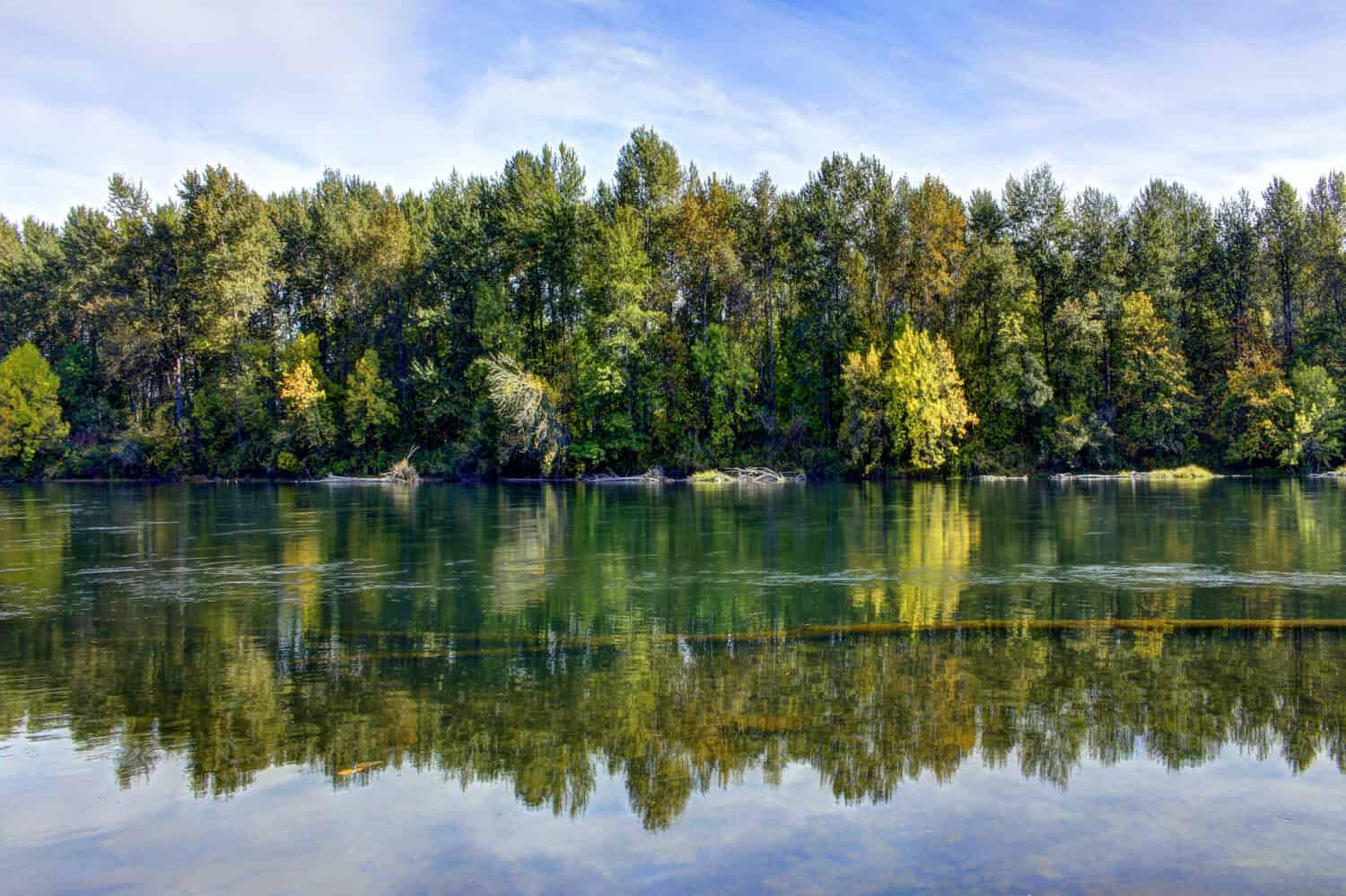
Swimming at Willamette River in Oregon is safe when practicing caution.
©Heather Elise Endicott/Shutterstock.com
What Can You Do at Willamette River?
In answer to this question, one is spoilt for choice in terms of all the challenging, interesting, educational, and just pure fun things to do in and around the Willamette River in Oregon.
- Relax on a beach! Some of Oregon’s most stunning beaches are along the Willamette River, including Poet’s Beach in the South Waterfront neighborhood. This is one of the best spots to swim, sunbathe, and relax without constant disruptions from all sorts of watercraft. Additional excellent beaches on the Willamette River are Kelley Point Park, Willamette Mission River, and San Salvador.
- Fishing, kayaking, paddle-boarding, floating, and rafting are popular pass times on the Willamette River. Forty miles of the Willamette River Water Trail offer multiple launch sites and access to ten different campgrounds.
- Take a boat tour or cruise the Willamette River, enjoying its lush, magnificent landscapes. You can take your pick from lunch, brunch, dinner, or a sightseeing cruise.
- Fishing is another favorite. The Willamette River is home to a large variety of fish species.
- To go underwater on a submarine is undoubtedly a thrilling adventure. Tour the USS Blueback Submarine (a barbell-class vessel used by the US Navy between 1959 and 1990) on the Willamette River.
What Animals Live in and Around Willamette River?
Much of Oregon’s wildlife dwells near the Willamette River, and a curious and observant visitor may glimpse a lush area teeming with an abundance of mammals, aqua mammals, a bounty of birds clothed in vibrant color, and a wide array of freshwater fish and other forms of life that favor the river and its surroundings.
Fish
The Willamette River is significant ecologically as it supports a variety of ecosystems and fauna. Salmon and steelhead run occurring in this river is a well-known fact. Fish like Chinook, coho, and steelhead travel from the oceans to the freshwater tributaries of the river to breed and reproduce. When fishing here at the Willamette River, there are various kinds of trout, like rainbow, cutthroat, sturgeon, smallmouth and largemouth bass, crappie, walleye, catfish, and American shad.
This freshwater habitat is also home to worms, snails, frogs, turtles, marsh birds, frogs, mollusks, beavers, otters, snakes, and many types of insects. Freshwater muscles can also be found in these waters.
This is truly a fisherman’s paradise, and fishermen are attracted from far and near. Fish from the Willamette River are useful for both leisure and commercial fishing.
Before you go fishing, make sure you look out for in-season regulation updates.
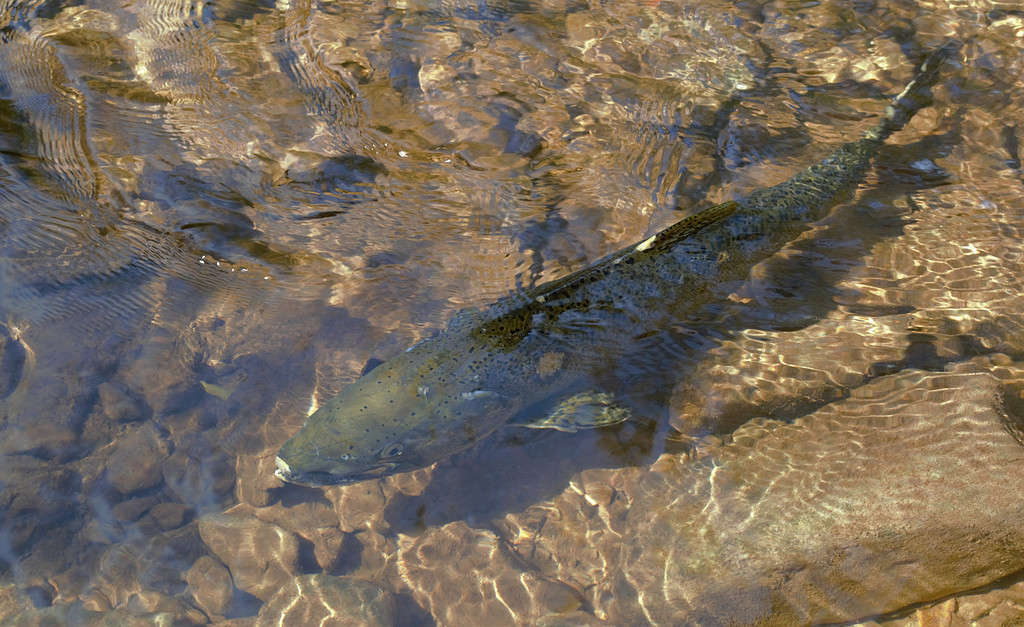
Cast your lines in the Willamette River to catch Chinook, salmon, or various trout species.
©Perry J Gale/Shutterstock.com
Snakes
The Willamette River is home to a few snake species.
- Northwestern Garter Snake: This non-venomous snake species is slim and 18-45 inches long. Its coloring is a black or dark brown background with three yellow or greenish-yellow tinted longitudinal stripes. They are active during the daytime, especially in warm weather.
- Western Water Snake: The Western water snake is non-venomous and two to four feet long. It is dark brown or gray with dark spots or bands along its body and is without fangs or venom glands. Generally harmless, it will bite if threatened. It is active during the daytime.
- Western Terrestrial Garter Snake: This non-venomous snake is slim and 18-42 inches long, colored in subtle tones, or black or dark brown base with yellow, orange, or reddish stripes.
- Rubber Boa: Rubber boas are small to medium-sized, nocturnal, non-venomous snakes 15-33 inches long. The snakeskin is smooth with a rubbery feel and appearance. It consumes small mammals, amphibians, and reptiles through constriction and swallowing. Because it is harmless, it is favored as a pet.
- Northern Pacific Rattlesnake: This is a venomous pit viper snake with the typical tail rattle when it feels threatened. It paralyzes its victims, mostly small animals, with venom. This rattlesnake normally avoids conflict with people and will flee if threatened, so keep a safe distance. They are nocturnal and mostly active in the warm summer weather.
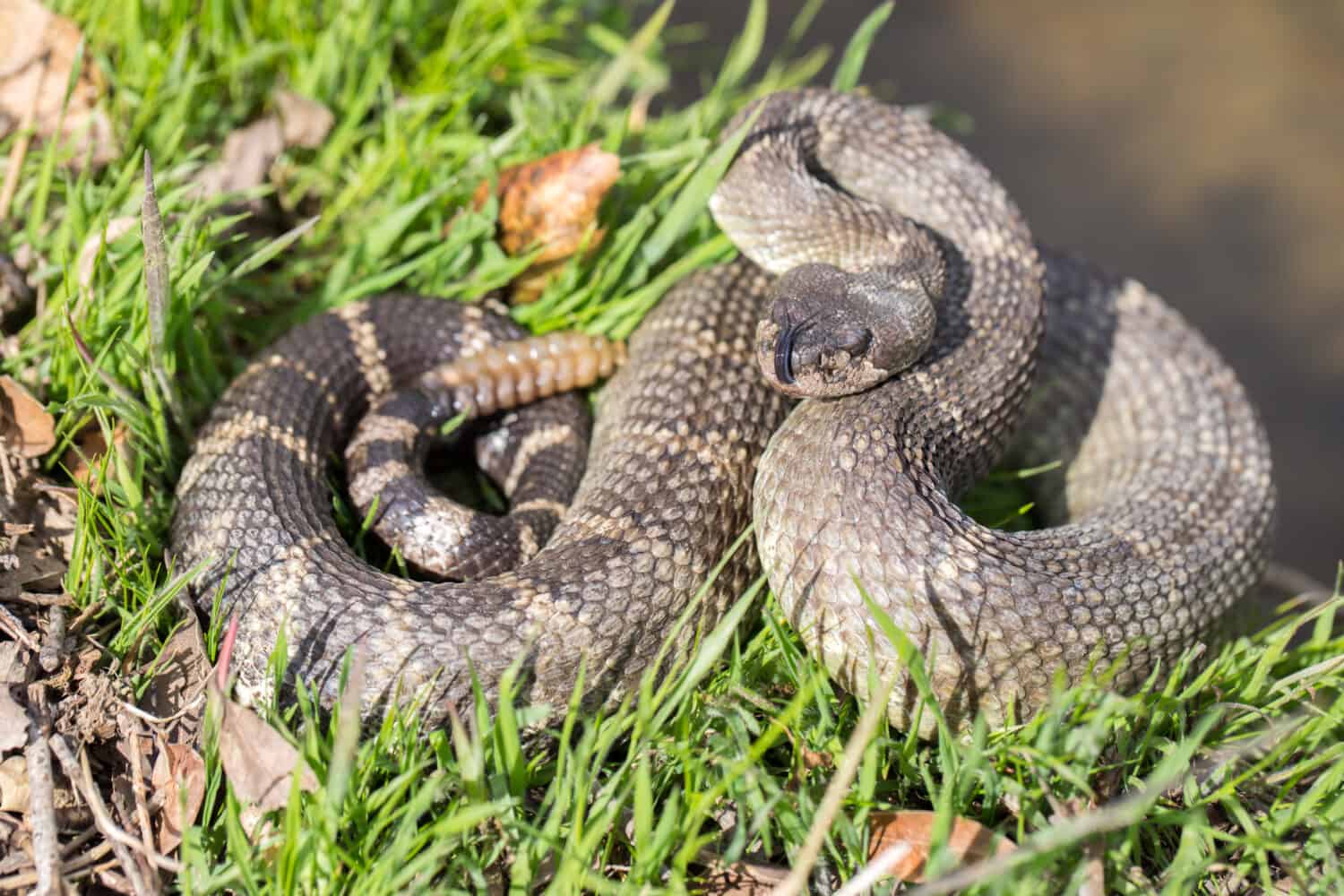
Various snake species exist at Willamette River, such as the Northern Pacific snake.
©yhelfman/Shutterstock.com
Mammals
Much of the wildlife in Oregon resides near the Willamette River. Some mammal visitors one can see on this river include beavers, black-tailed deer, and furbearers like mink, otters, red foxes, and coyotes.
Let’s expand on some of these mammals:
- Beaver – Oregon is nicknamed the “Beaver State.” They live throughout the wooded and partly wooded habitats within the Willamette Basin in ponds, marshes, and streams.
- Black-tailed Deer— Columbian black-tailed deer are found in western Oregon, from the west side of the Cascade Mountains to the Pacific Ocean. These would be particularly of interest to visiting hunters.
- Furbearers—Mink, otter, red fox, and coyote all fall into this category and are hunted for their fur.
- Though relatively rare, bobcats and cougars can sometimes be sighted along the river corridor.
- River Otters—These semi-aquatic mammals live in and around the Willamette River. They are well-known for their pleasant personality and are loveable to all.
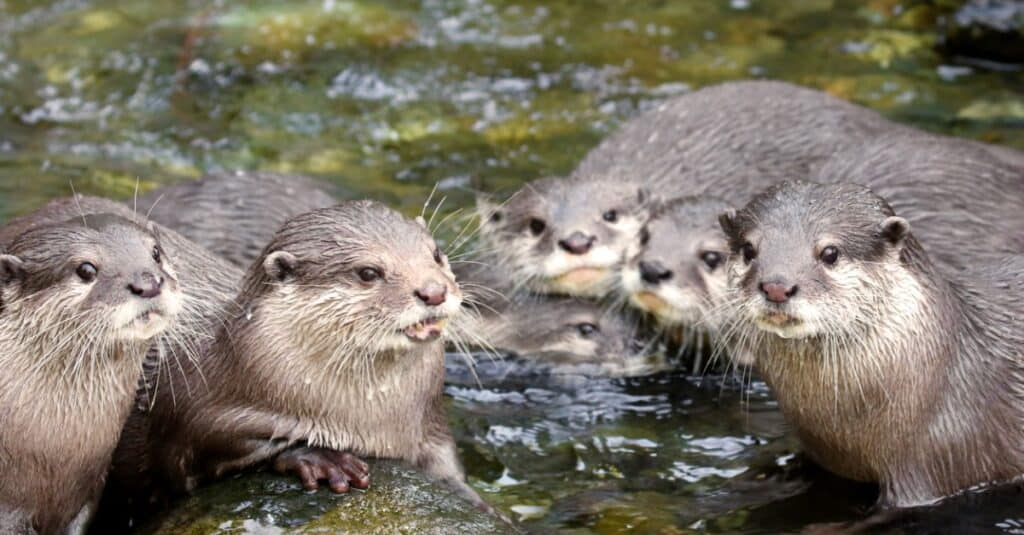
Observe playful river otters at the Willamette River.
©iStock.com/Mirko_Rosenau
Birds
The birdlife along the Willamette River provides the most beautiful array of colors and cacophony of sounds! This is truly an avid birdwatcher’s paradise!
A magnificent but common sight along the Willamette Riverbanks would be the great blue heron with its long neck and grey-blue plumage wading in the water and catching fish and other small water prey.
There is such a variety of wildlife along the Willamette River. Common birds include belted kingfisher, turkey vulture, spotted sandpiper, wood duck, merganser, and more.
One can witness a range of migratory songbirds like goldfinches, common yellowthroat, Wilson’s warblers, Townsend’s warblers, Swainson’s thrush, and many more during the spring and summer months.
There are also year-round resident birds like song spar, juncos, Beswick’s Wren, Stellar’s Jay, and scrub jays, among many others.
Some unusual and special bird species to look for include white pelicans, black terns, band-tailed pigeons, yellow-headed blackbirds, osprey, and bald eagles.
Several backyard birds can be found in the Willamette Valley area, including the black-capped chickadee, spotted towhee, northern flicker, American goldfinch, Anna’s hummingbird, song sparrow, California scrub-jay, and the dark-eyed junco.
Nesting areas for these birds, called rookeries, are protected by state and federal law and should be avoided as they and many migratory birds spend time in the area.
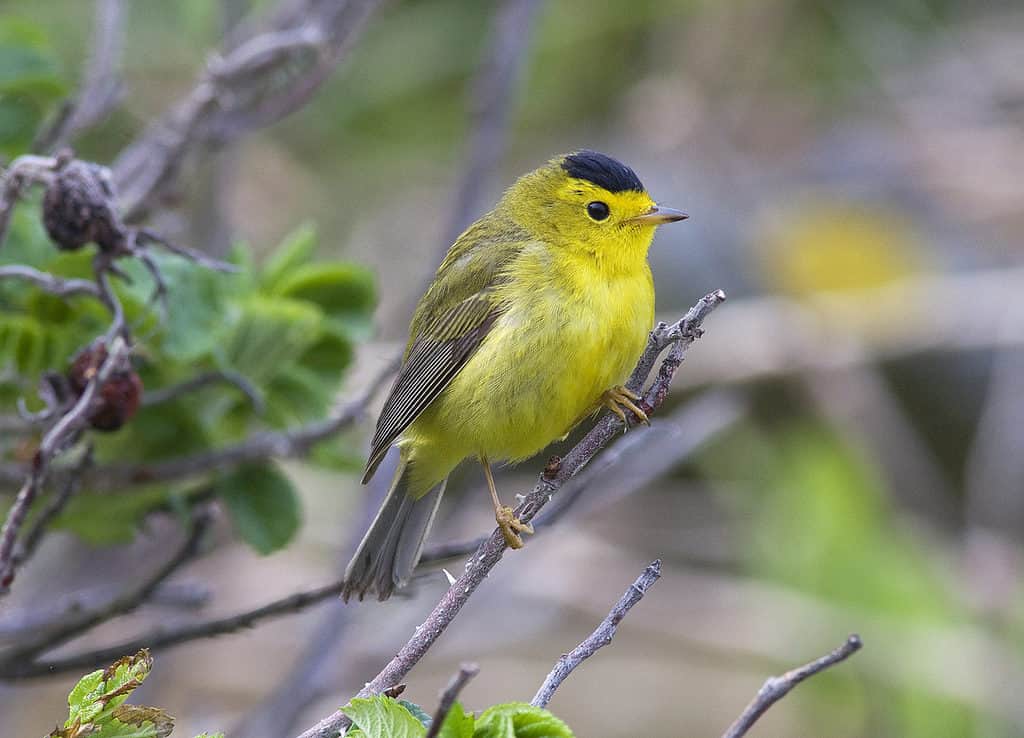
At Willamette River, birdwatchers can try to spot Wilson’s warblers (pictured), Swainson’s thrush, juncos, and more.
©iStock.com/Leon Gin
Swimming in Willamette River
It’s a fact! Summer swimming is approved for in the Willamette River, and swimming there is almost always safe.
There are rare occasions when sewer overflows and algae blooms cause the river to be temporarily unsafe for swimming. Rest assured that the city agencies (DEQ) are regularly on the job to monitor the water quality and warn the public to stay out until the conditions improve.
So, for aspiring visitors and tourists to the Willamette River, rest assured that you can safely visit and enjoy the pleasurable activities and bask in the beauty of the river and its surrounds and enjoy the wildlife and the wide-open spaces that promise a spectacular vacation with all that it has to offer.
Arrange your next vacation around the Willamette River and test the water yourself!
The photo featured at the top of this post is © justkidding/Shutterstock.com
Thank you for reading! Have some feedback for us? Contact the AZ Animals editorial team.







